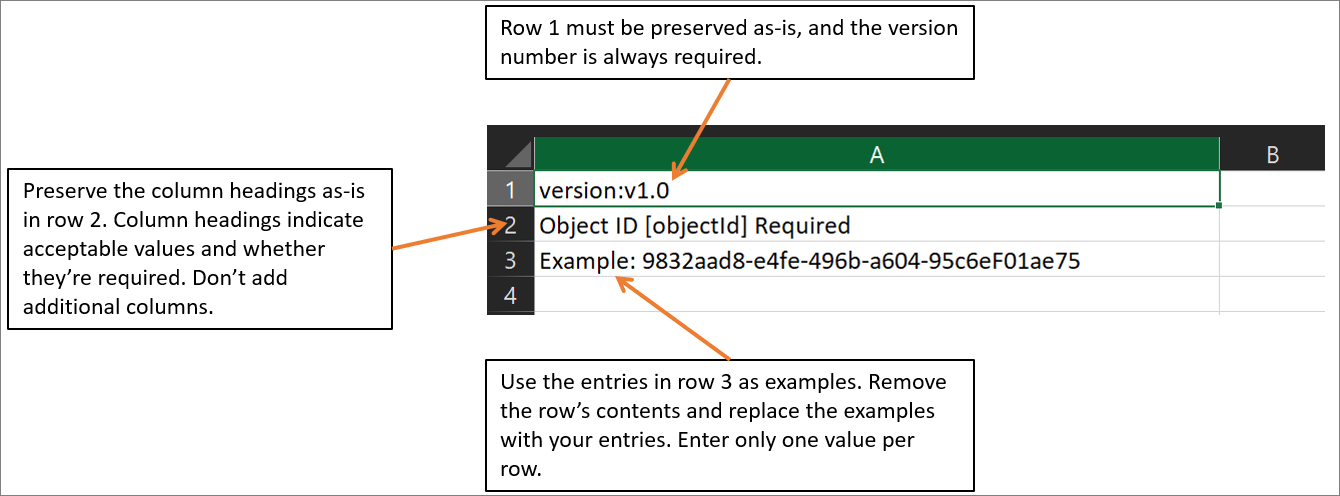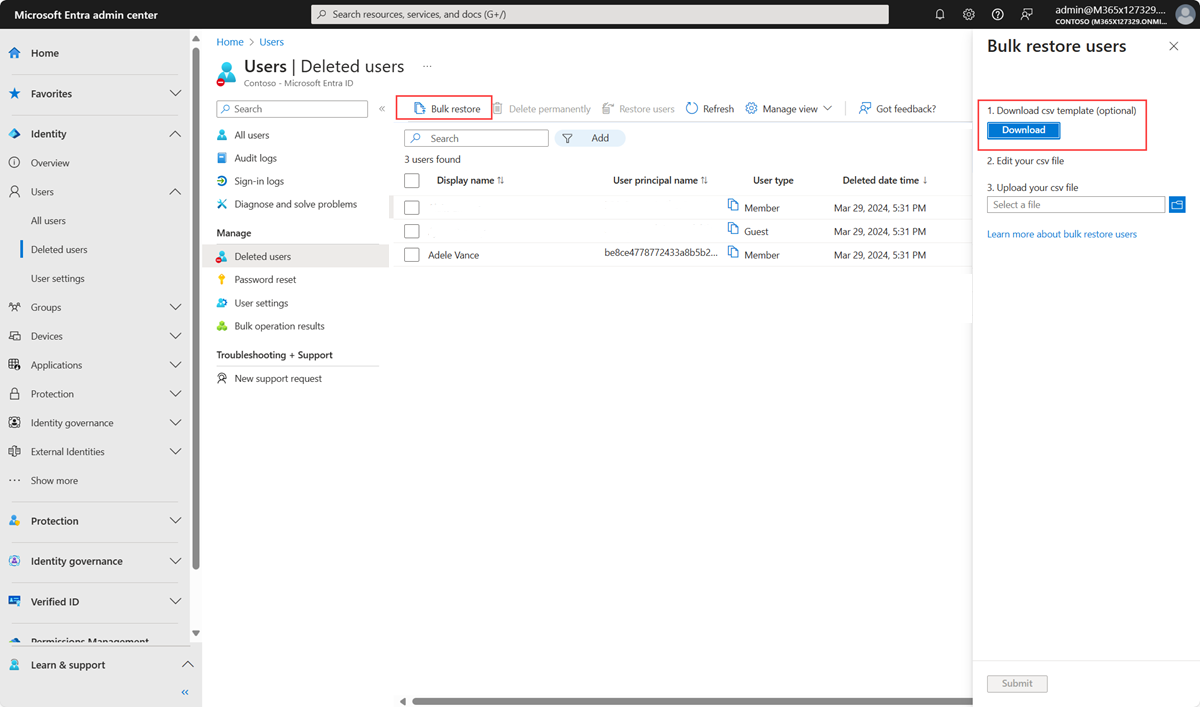Bulk restore deleted users in Microsoft Entra ID
Microsoft Entra ID supports bulk user restore operations and downloading lists of users, groups, and group members.
Understand the CSV template
Download and fill in the CSV template to help you successfully restore Microsoft Entra users in bulk. The CSV template you download might look like this example:

CSV template structure
The rows in a downloaded CSV template are as follows:
- Version number: The first row containing the version number must be included in the upload CSV.
- Column headings: The format of the column headings is <Item name> [PropertyName] <Required or blank>. For example,
Object ID [objectId] Required. Some older versions of the template might have slight variations. - Examples row: We have included in the template a row of examples of acceptable values for each column. You must remove the examples row and replace it with your own entries.
Additional guidance
- The first two rows of the upload template must not be removed or modified, or the upload can't be processed.
- The required columns are listed first.
- We don't recommend adding new columns to the template. Any additional columns you add are ignored and not processed.
- We recommend that you download the latest version of the CSV template as often as possible.
To bulk restore users
Sign in to the Microsoft Entra admin center as at least a User Administrator.
Select Microsoft Entra ID.
Select All users > Users > Deleted.
On the Deleted users page, select Bulk restore to upload a valid CSV file of properties of the users to restore.

Open the CSV template and add a line for each user you want to restore. The only required value is ObjectID. Then save the file.

On the Bulk restore page, under Upload your csv file, browse to the file. When you select the file and select Submit, validation of the CSV file starts.
When the file contents are validated, you see File uploaded successfully. If there are errors, you must fix them before you can submit the job.
When your file passes validation, select Submit to start the bulk operation that restores the users.
When the restore operation completes, you see a notification that the bulk operation succeeded.
If you experience errors, you can download and view the results file on the Bulk operation results page. The file contains the reason for each error. The file submission must match the provided template and include the exact column names. For more information about bulk operations limitations, see Bulk restore service limits.
Check status
You can see the status of all of your pending bulk requests in the Bulk operation results page.
Next, you can check to see that the users you restored exist in the Microsoft Entra organization via either Microsoft Entra ID or PowerShell.
View restored users in the Azure portal
- Sign in to the Microsoft Entra admin center as at least a User Administrator.
- Select Microsoft Entra ID.
- Select All users Under Manage, select Users.
- Under Show, select All users and verify that the users you restored are listed.
View users with PowerShell
Run the following command:
Get-MgUser -Filter "UserType eq 'Member'"
You should see that the users that you restored are listed.
Note
Azure AD and MSOnline PowerShell modules are deprecated as of March 30, 2024. To learn more, read the deprecation update. After this date, support for these modules are limited to migration assistance to Microsoft Graph PowerShell SDK and security fixes. The deprecated modules will continue to function through March, 30 2025.
We recommend migrating to Microsoft Graph PowerShell to interact with Microsoft Entra ID (formerly Azure AD). For common migration questions, refer to the Migration FAQ. Note: Versions 1.0.x of MSOnline may experience disruption after June 30, 2024.
Bulk restore service limits
Note
When performing bulk operations, such as import or create, you can encounter a problem if the bulk operation doesn't complete within the hour. To work around this issue, we recommend splitting the number of records processed per batch. For example, before starting an export you could limit the result set by filtering on a group type or user name to reduce the size of the results. By refining your filters, essentially you limit the data returned by the bulk operation. For more information, see Bulk operations service limitations.
